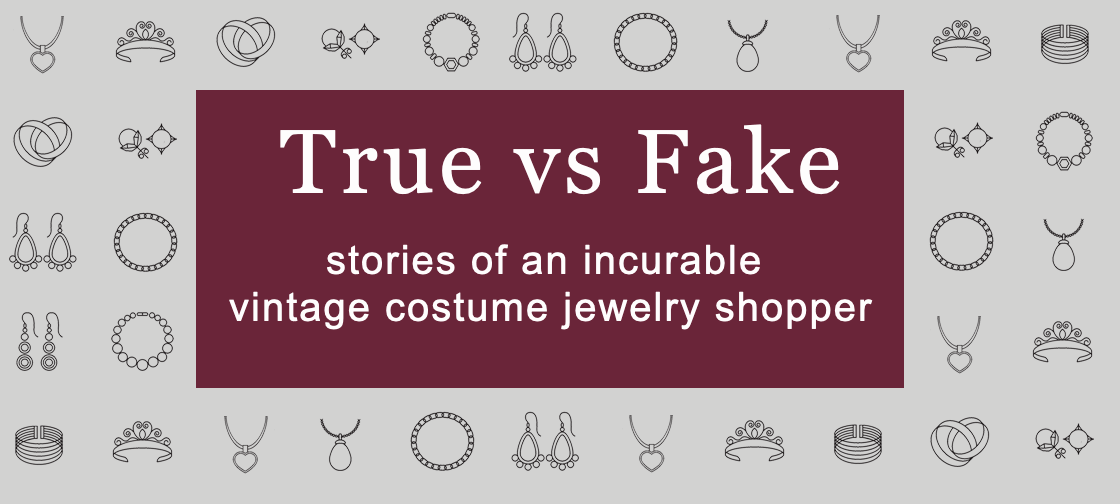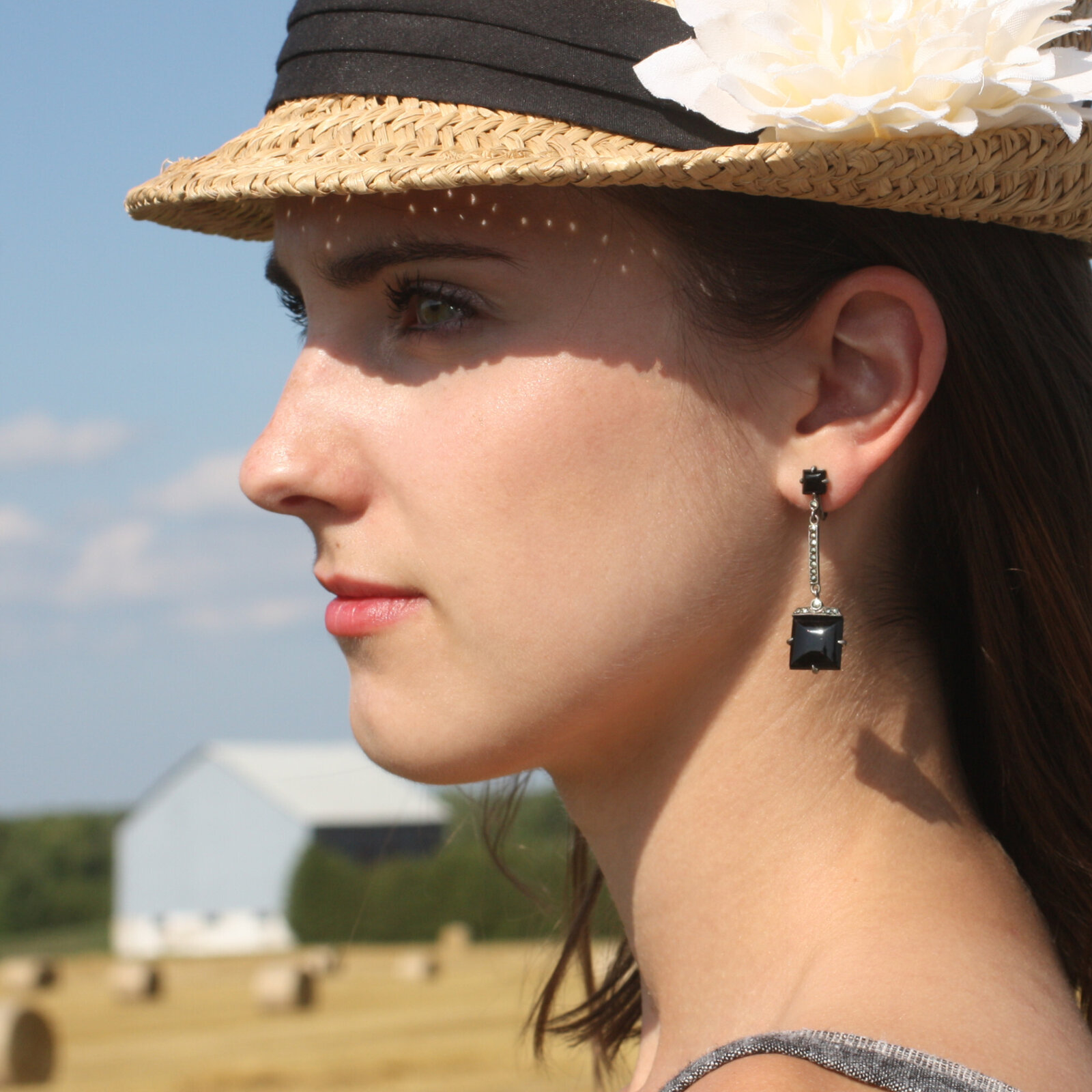
Never before has the phrase “buyer beware” been so meaningful. As a long-time vintage jewelry reseller through TruFaux Jewels (and avid collector), like you, I’ve greatly benefited from frequent perusing of my favorite sites. It embellishes my understanding of vintage costume jewelry, and it has taught me a lot about how to view descriptions and pictures with a critical eye.
I’m dismayed at how much misinformation is presented, especially about vintage costume jewelry. Some people just don’t know about what they’re trying to sell or haven’t taken the time to find out. Others are simply unscrupulous. All buyers and sellers suffer from this plague because it builds mis-trust.
My usual response to this misinformation is frustration and anger, because I know how hard I work to research, write and speak accurately about costume jewelry history in general, and the care I take to identify and describe the pieces I sell. About a year ago, I decided to turn these feelings into something positive. To address common pitfalls in buying vintage costume jewelry, I began writing the series “True vs. Fake”. Its purpose is to help both sellers and buyers become more informed.
In the process of researching and writing these articles, I discovered that I, too, make mistakes. And I fix them. Here are a few highlights that might motivate you to take a closer look, too.
Six-part TruFaux Jewels “True vs. Fake” Series

WHO: This series begins with the story “True vs. Fake: I Was Duped”. In it, I recount how I bought a necklace and earrings set signed “Miriam Haskell” in my early days as a dealer, only to find out that it was deliberately faked to fool potential buyers. Had I been more experienced, I would have seen the deception in the listing immediately.
WHERE: The second article, “True vs Fake: How to Avoid Tarnishing a Sterling Reputation”, discusses the meanings of sterling marks, the importance of discerning where they are stamped on jewelry, and the questions a buyer might ask when what’s offered isn’t clear.
WHAT: One of my pet peeves is the incorrect use of terminology such as “glass”, “crystal” and “rock crystal” in descriptions of jewelry components. These three aren’t the same. In “True vs. Fake: Is It Crystal Clear?”, I discuss the differences and give examples of each.
WHEN: In Part 4 of the series – “True vs. Fake: Missing the Mark” – I write about the types of marks that may be found on vintage jewelry; what they reveal about a piece, including when it was likely made; and how marks can be misinterpreted.
WHY: “True vs. Fake: Mistaken Identities” gives tips for identifying unsigned vintage jewelry and focuses on the French maker Louis Rousselet. I chose his company because their work was rarely signed on the jewelry and explain why unsigned jewels are often mis-attributed to them.
HOW: Part 6 – “True vs. Fake: What’s in a Name?” shows examples of identical pieces with different marks and explains how that’s possible.
Lessons Learned
When writing this series, I took the opportunity to review my collection and how I described many of the pieces. In some cases, some time has passed since I added them to the TruFaux Jewels website. While working on the sterling silver article, I reviewed every piece I had described as “sterling” to make sure it really is. The most meaningful experience was looking at everything I had attributed to Louis Rousselet – I found that I, like many sellers and collectors, had forgotten about the fact that his company made beads in addition to jewelry. I realized that some of my inventory was likely made by another company using Rousselet beads.
I don’t know about you, but I can easily admit that I don’t know everything about vintage costume jewelry and that I’m constantly learning. Although it’s time-consuming, I try to apply new knowledge to old work. And writing the “True vs. Fake” series is my way of sharing what I have learned with buyers and sellers alike.
I welcome the blossoming interest in buying and selling vintage fashion. It has re-energized what was once a small specialized niche attracting a whole new cohort interested in shopping for affordable, eco-conscious and unique finds. But, take it from me, buyer (and seller) better beware. When we all do our research, we elevate vintage costume jewelry, and that is good for everyone.

About Barbara Schwartz and TruFauxJewels.com
Out of a love for Art Deco design, Barbara began collecting vintage costume jewelry decades ago. As a trained librarian, her skills in research and authentication were applied to learn as much as she could about the decorative art form. Her love of solving mysteries became an obsession for finding the truth about costume jewelry from the 1920s to the 1950s. Barbara founded TruFauxJewels.com in 2010, when she turned her personal collecting into a small business. Barbara is a long-time member of the Vintage Fashion Guild, the ASJRA, American Society of Jewelry Historians, GEM X and Costume Society of America. She has given talks at numerous antique and collectors events. Her extensive research into vintage costume jewelry by Wachenheimer Bros. and by the German maker Schreiber & Hiller has been published by ASJRA. For more about Barbara and the TruFaux Jewels collection, visit: TruFauxJewels.com and follow @TruFauxJewels (Instagram/Facebook).
